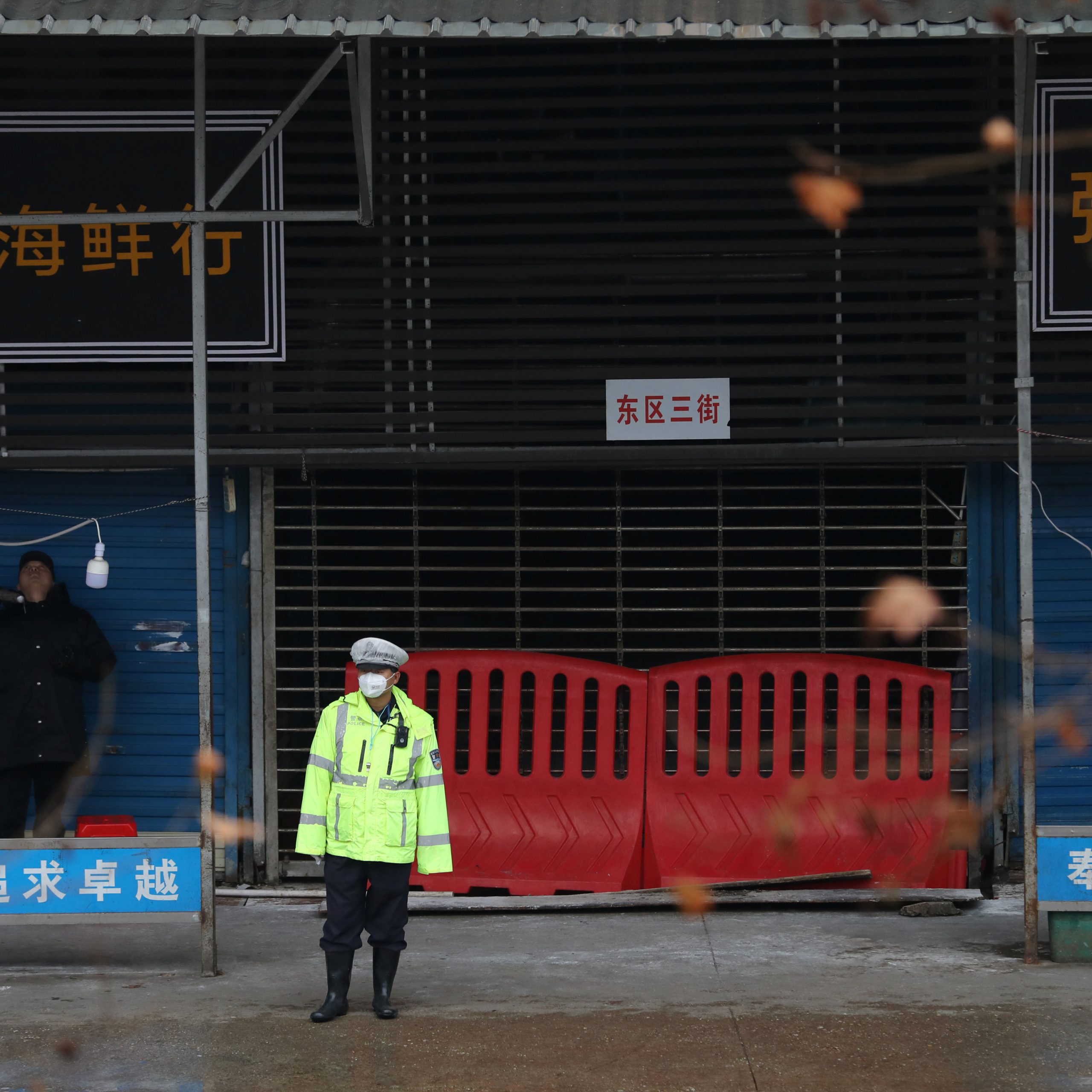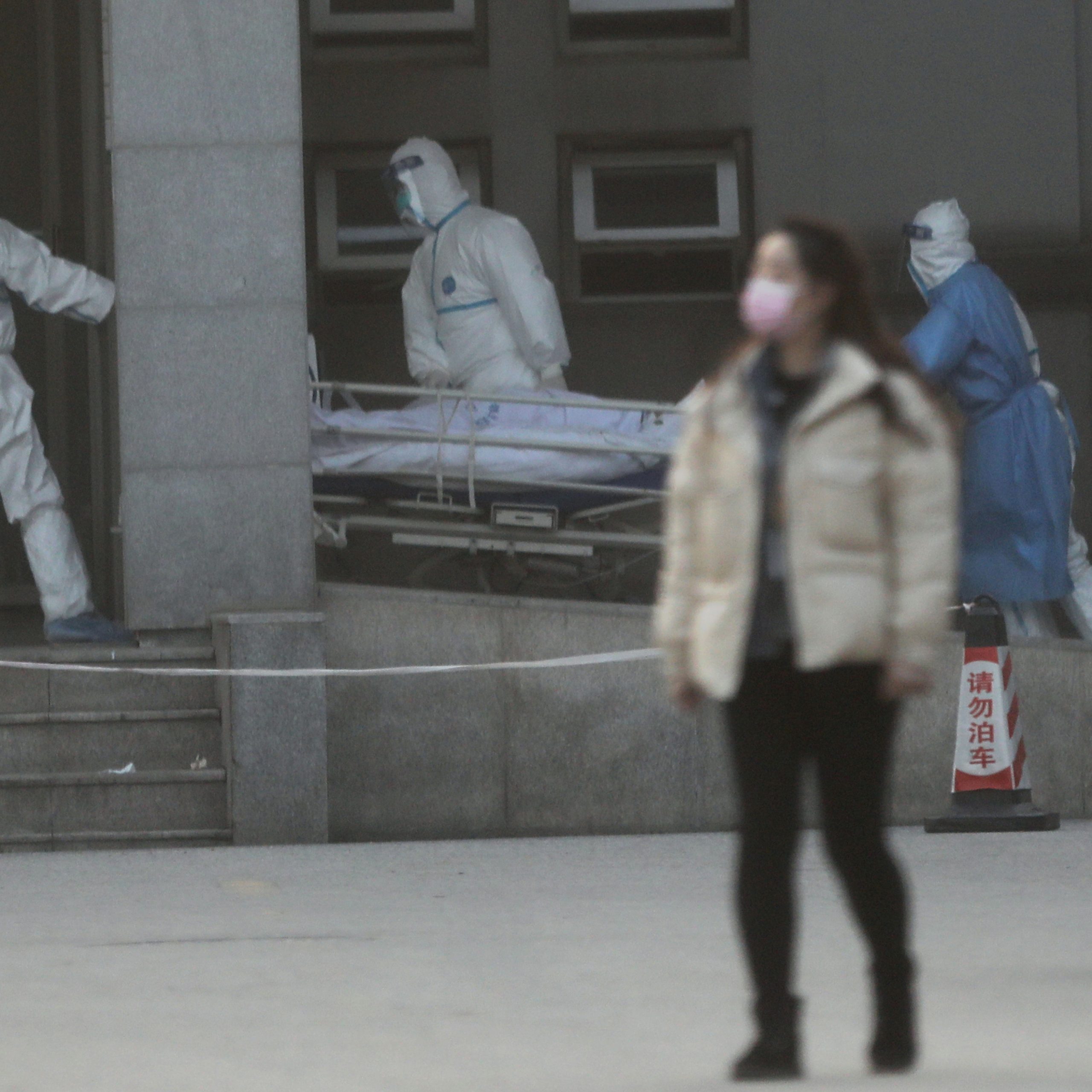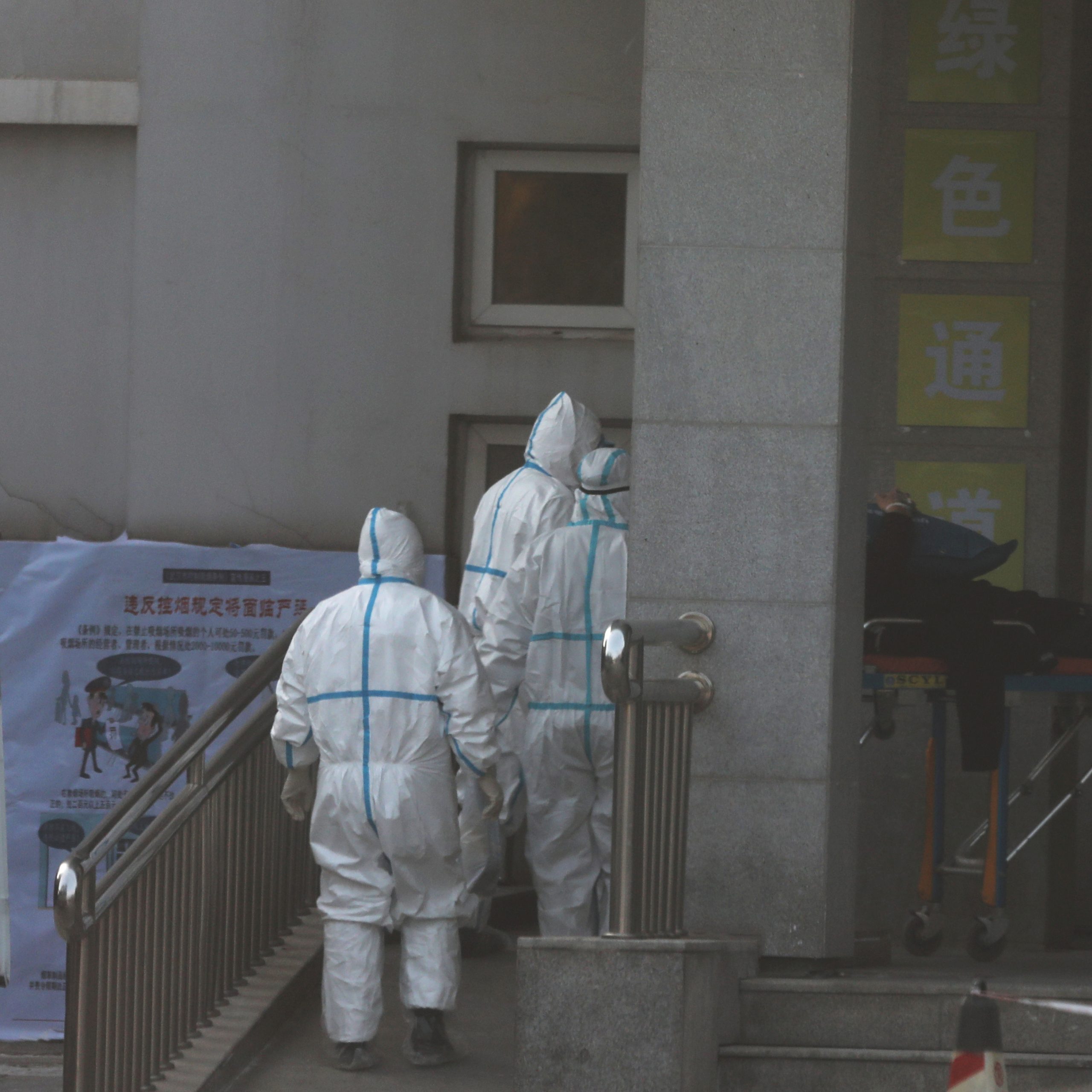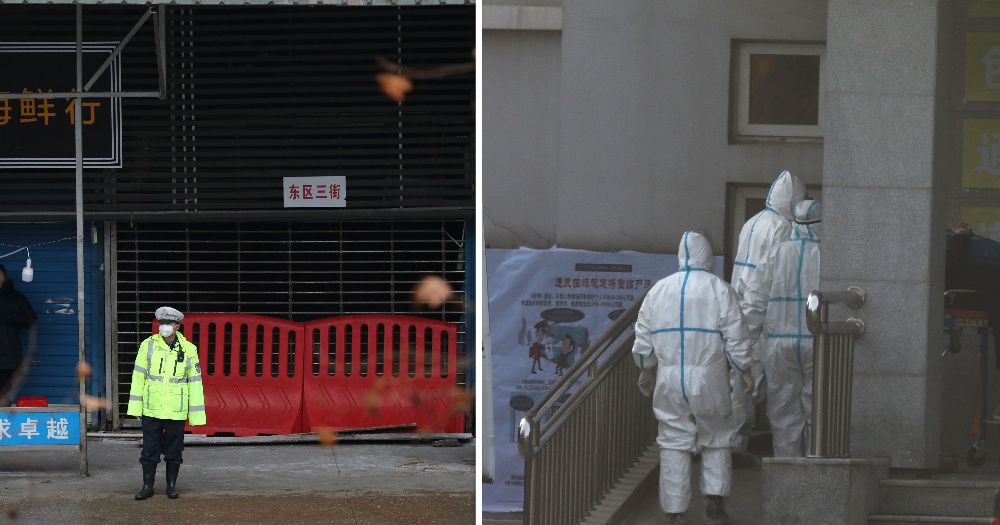The year 2020 started with a seafood market in Wuhan being closed down.
 A police officer wearing a mask stands in front of the closed seafood market in Wuhan, Hubei province, China January 10, 2020. The seafood market is linked to the outbreak of the pneumonia caused by the new strain of coronavirus, but some patients diagnosed with the new coronavirus deny exposure to this market. Picture taken January 10, 2020. REUTERS/Stringer CHINA OUT.
A police officer wearing a mask stands in front of the closed seafood market in Wuhan, Hubei province, China January 10, 2020. The seafood market is linked to the outbreak of the pneumonia caused by the new strain of coronavirus, but some patients diagnosed with the new coronavirus deny exposure to this market. Picture taken January 10, 2020. REUTERS/Stringer CHINA OUT.
It was from that market that a new strain of coronavirus that causes what is now called “Wuhan pneumonia”, originated.
There are now more than 200 reported cases of Wuhan pneumonia across China.
Cases tripled over the weekend in the world’s most populous country, and so far, as we write this, four people are reported to have died from the pneumonia.
 Medical staff transfer a patient at the Jinyintan hospital, where the patients with pneumonia caused by the new strain of coronavirus are being treated, in Wuhan, Hubei province, China January 20, 2020. REUTERS/Stringer CHINA OUT.
Medical staff transfer a patient at the Jinyintan hospital, where the patients with pneumonia caused by the new strain of coronavirus are being treated, in Wuhan, Hubei province, China January 20, 2020. REUTERS/Stringer CHINA OUT.
Experts have told the BBC that the number might actually be closer to 1,700.
Although the majority of cases are from China, there has been one confirmed case in South Korea and two in Thailand.
There was a case in Japan, but the patient was later cured.
The spread initially didn't seem to be too much of a concern, but the devil is in the details.
While the pneumonia outbreak originated from a seafood market in Wuhan, it has since spread out quite a bit.
Some 198 confirmed cases have been reported in Wuhan.
Wuhan is also the only place so far that has seen deaths from the pneumonia.
However, recently two cases of the Wuhan pneumonia were reported in Beijing.
Another case was confirmed in Shenzhen.
The disease has gone global.
Singapore has not had any confirmed case of Wuhan pneumonia as of this article.
One measure Singapore initially imposed was to screen those flying in from Wuhan.
That net has been widened to all passengers from China following the discovery of the disease in other parts of the country.
According to Reuters, China also now carries out temperature tests before boarding flights at Wuhan's international airport.
These measures are aimed at catching any passengers who might show symptoms of the Wuhan pneumonia.
Here are the symptoms according to the World Health Organisation:
"The clinical signs and symptoms reported are mainly fever, with a few cases having difficulty in breathing, and chest radiographs showing invasive pneumonic infiltrates in both lungs."
It is not clear if there is an incubation period where the virus remains symptomless, but for severe acute respiratory syndrome (SARS), it was usually two to seven days, although periods of up to 14 days were reported.
Wuhan pneumonia, while in the same family as SARS, appears to be less lethal than SARS at the moment.
Which means there might be some gaps in these temperature checks, but on the surface it appears airports are doing as much as they can to identify possible cases of coronavirus pneumonia in travellers entering various countries.
This unfortunately brings us to the other major mode of transport in China: Trains.
In the same Reuters article, the juxtaposition of airport security and checks at train stations is quite jarring:
"A person who works for China’s official train ticketing service told Reuters on Friday that there were no additional health screening measures or temperature checks in place at Wuhan train stations."
But why does that matter?
China loves their trains
Approximately 3.4 billion people travelled by train in China in 2018.
There are 55 pairs of trains running from Wuhan to Beijing alone.
China's massive size will be on display in the coming weeks, as the world's "largest annual human migration" takes place.
A South China Morning Post (SCMP) article puts the number at "three billion trips in 40 days" with hundreds of millions of Chinese making their way back home.
According to the same SCMP article, there will be 4,787 train services before the Lunar New Year, and 4,860 after.
This has sparked fears of the virus literally spreading across China through unwitting human carriers.
According to Business Insider, China is stepping up their "guard" over this festive season and bringing in new "control measures", but provided no details on what measures that will involve.
Here is perhaps the crux of the entire issue: Is it transmittable via human-to-human interaction?
 Medical staff transfer a patient from an ambulance at the Jinyintan hospital, where the patients with pneumonia caused by the new strain of coronavirus are being treated, in Wuhan, Hubei province, China January 20, 2020. REUTERS/Stringer CHINA OUT.
Medical staff transfer a patient from an ambulance at the Jinyintan hospital, where the patients with pneumonia caused by the new strain of coronavirus are being treated, in Wuhan, Hubei province, China January 20, 2020. REUTERS/Stringer CHINA OUT.
Unfortunately, it appears there might be some elements of human-to-human transmission.
According to the Associated Press, two people in Guangdong had caught the virus from family members, while medical workers tested positive for the virus.
CNA later reported that 15 medical workers were infected, and that one was in critical condition.
A China Daily report cited Li Gang, director and chief physician of the Wuhan Center for Disease Control and Prevention, as saying that while the possibility of limited human-to-human transmission cannot be ruled out, the risk of "continuous human-to-human transmission" is low.
Zhong Nanshan, the scientist who helped expose the scale of the SARS outbreak said it was affirmative that there is evidence of human-to-human transmission.
The same China Daily report noted that the "SARS virus first infected humans, it mutated into a more virulent strain".
What can be done
In conclusion, there still is precious little known about the coronavirus — but if human-to-human transmission has already taken place among cases of it in China, it’s just a matter of time before it will hit our shores.
Here's what you can do to protect yourself in the meantime, per guidelines shared by the Ministry of Health:
• Avoid contact with live animals including poultry and birds, and consumption of raw and undercooked meats;
• Avoid close contact with people who are unwell or showing symptoms of illness;
• Observe good personal hygiene;
• Practise frequent hand washing with soap;
• Wear a mask if you have respiratory symptoms such as a cough or runny nose;
• Cover your mouth with a tissue paper when coughing or sneezing, and dispose the soiled tissue paper in the rubbish bin immediately; and
• Seek medical attention promptly if you are feeling unwell.
Stay safe.
Related articles
Top photo via Reuters
If you like what you read, follow us on Facebook, Instagram, Twitter and Telegram to get the latest updates.
